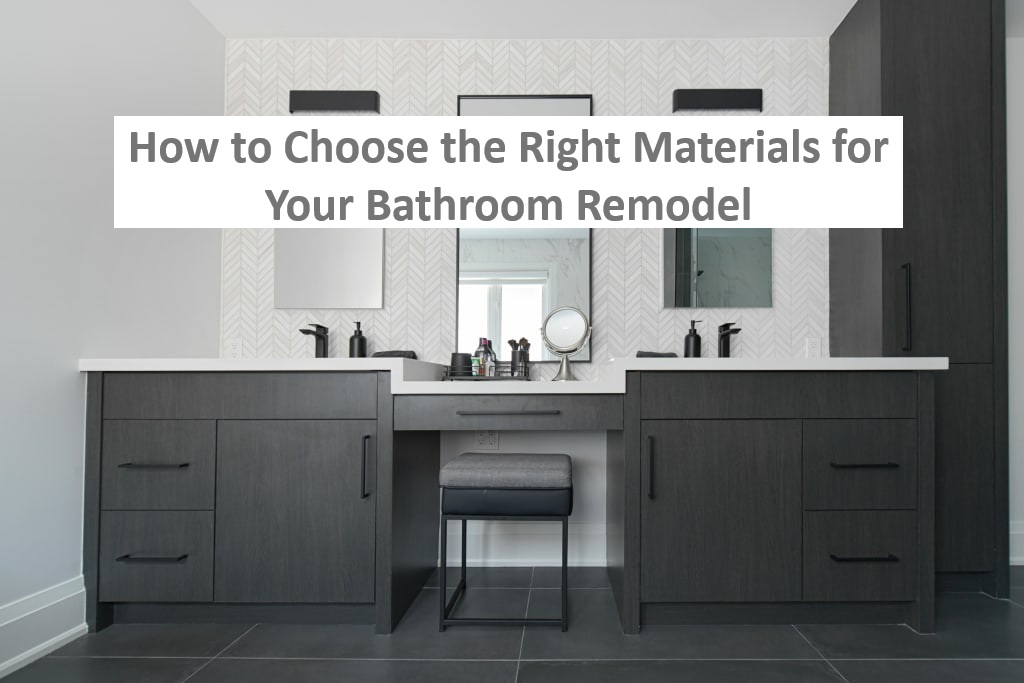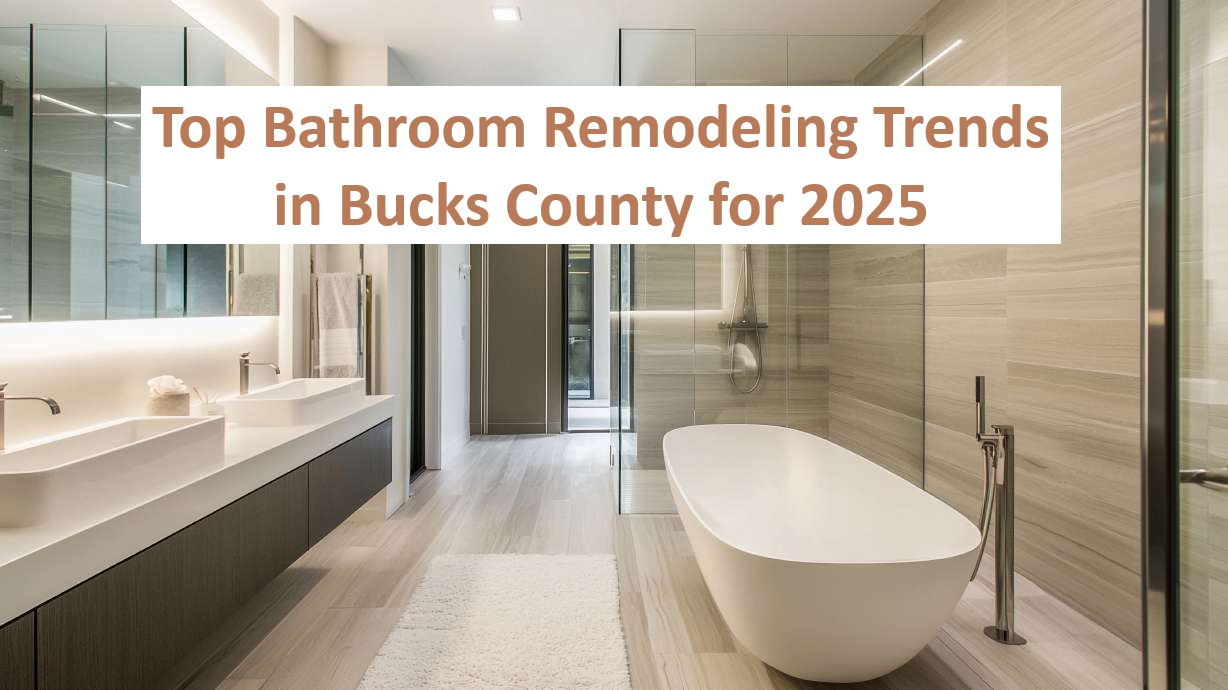When planning a bathroom remodel, choosing the right materials is just as important as selecting a design or layout. The bathroom is a high-moisture environment, which means your surfaces and fixtures need to be durable, water-resistant, and easy to maintain, without sacrificing style.
Whether you’re doing a full renovation or a partial upgrade, this guide will help you select the best materials for your project.
1. Flooring: Durability and Safety First
Your bathroom floor needs to be slip-resistant, waterproof, and strong enough to withstand daily use. Popular options include:
- Porcelain or Ceramic Tile: Highly durable, water-resistant, and available in a wide variety of colors and textures.
- Vinyl Flooring: Budget-friendly and easy to install, with water-resistant qualities. Modern vinyl can mimic the look of wood or stone.
- Natural Stone: Luxurious and long-lasting, but requires sealing and maintenance to prevent water damage and staining.
Tip: Look for tiles with a textured or matte finish for better traction and slip resistance.
2. Countertops: Balance Beauty and Function
Bathroom countertops should be resistant to water, stains, and cosmetics. Consider:
- Quartz: Non-porous, low-maintenance, and highly durable. Ideal for modern and classic designs alike.
- Granite: Naturally beautiful and tough, though it requires periodic sealing.
- Solid Surface (e.g., Corian): Seamless, stain-resistant, and available in many colors and finishes.
- Marble: Elegant but porous—better suited for low-traffic bathrooms unless sealed regularly.
3. Wall Materials: Moisture Resistance is Key
Walls in bathrooms need to withstand humidity and direct water exposure, especially in the shower area.
- Tile (ceramic, porcelain, or glass): Great for shower walls and backsplashes. Easy to clean and available in endless patterns.
- Paint (moisture-resistant): Use mold- and mildew-resistant paint for non-shower walls to keep your space healthy.
- Waterproof Panels: Acrylic or PVC panels are growing in popularity for their seamless installation and ease of cleaning.
4. Cabinetry: Strong and Stylish Storage
Bathroom cabinets should be made from materials that can resist warping and swelling over time.
- Plywood: A great choice for bathroom vanities—strong, stable, and moisture-resistant.
- MDF (Medium-Density Fiberboard): Affordable and smooth for painting, but not as water-resistant as plywood.
- Thermofoil: A vinyl coating over MDF that is durable and moisture-resistant but may peel with heat exposure.
Choose finishes and hardware that complement your bathroom’s overall design—matte black, brushed gold, and chrome are trending in 2025.
5. Shower and Tub Materials
For the wettest part of your bathroom, choose materials that offer a combination of water resistance, durability, and style.
- Acrylic or Fiberglass: Lightweight, affordable, and easy to install.
- Tiled Showers: Porcelain or ceramic tiles with waterproof backer boards and proper sealing offer a custom look.
- Stone or Engineered Stone: Beautiful and long-lasting but needs regular maintenance and sealing.
6. Fixtures and Finishes
High-quality fixtures not only add style but also ensure lasting performance.
- Faucets & Showerheads: Opt for brass or stainless steel interiors for durability. Matte black and brushed nickel are popular finish choices.
- Toilets: One-piece models are easier to clean and offer a sleek appearance.
- Sinks: Undermount and vessel sinks each have aesthetic and functional benefits—choose based on your countertop and space.
Final Thoughts
Selecting the right materials for your bathroom remodel involves more than just picking what looks good. Consider functionality, moisture resistance, durability, and maintenance to make sure your remodel lasts for years to come.If you’re ready to start your bathroom transformation and need expert advice on material selection, visit Bathroom Remodeling Bucks County. Their experienced team can help you choose the perfect materials to suit your lifestyle, budget, and design preferences.





